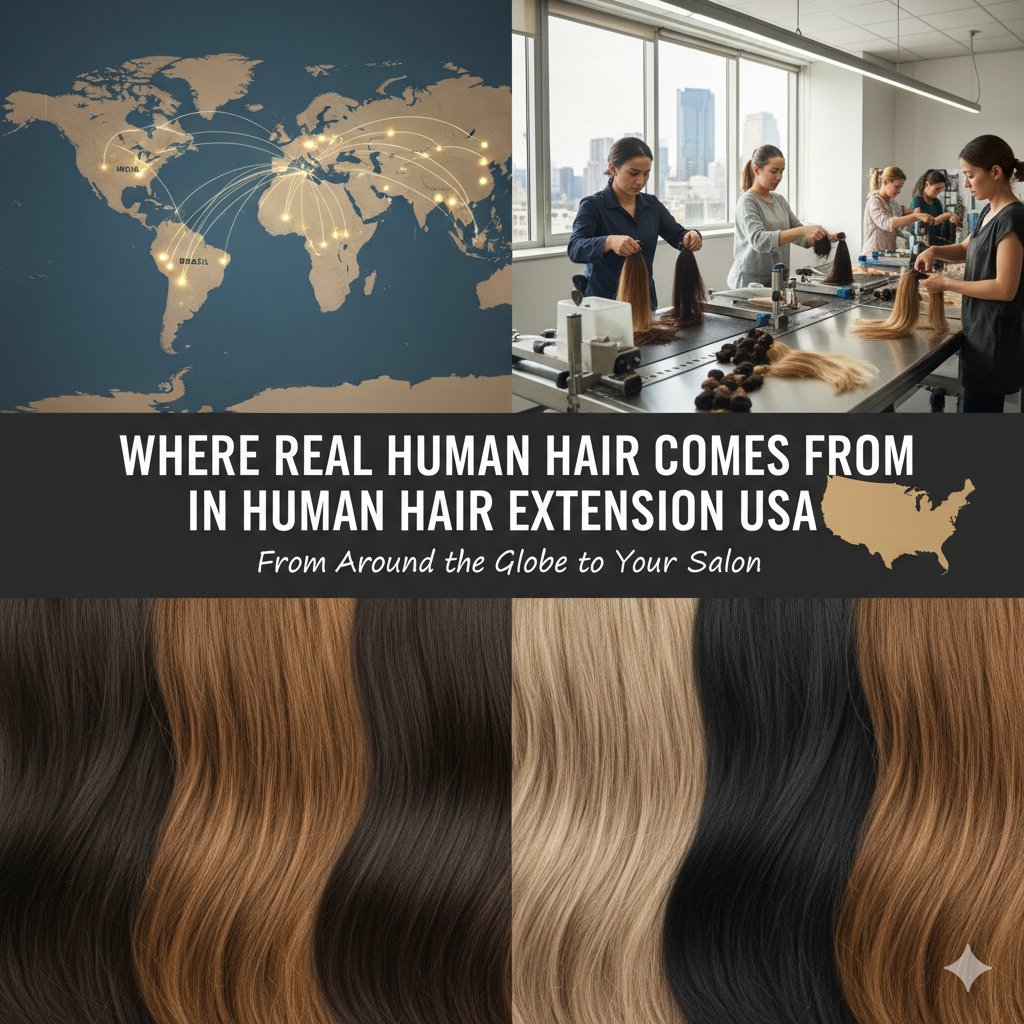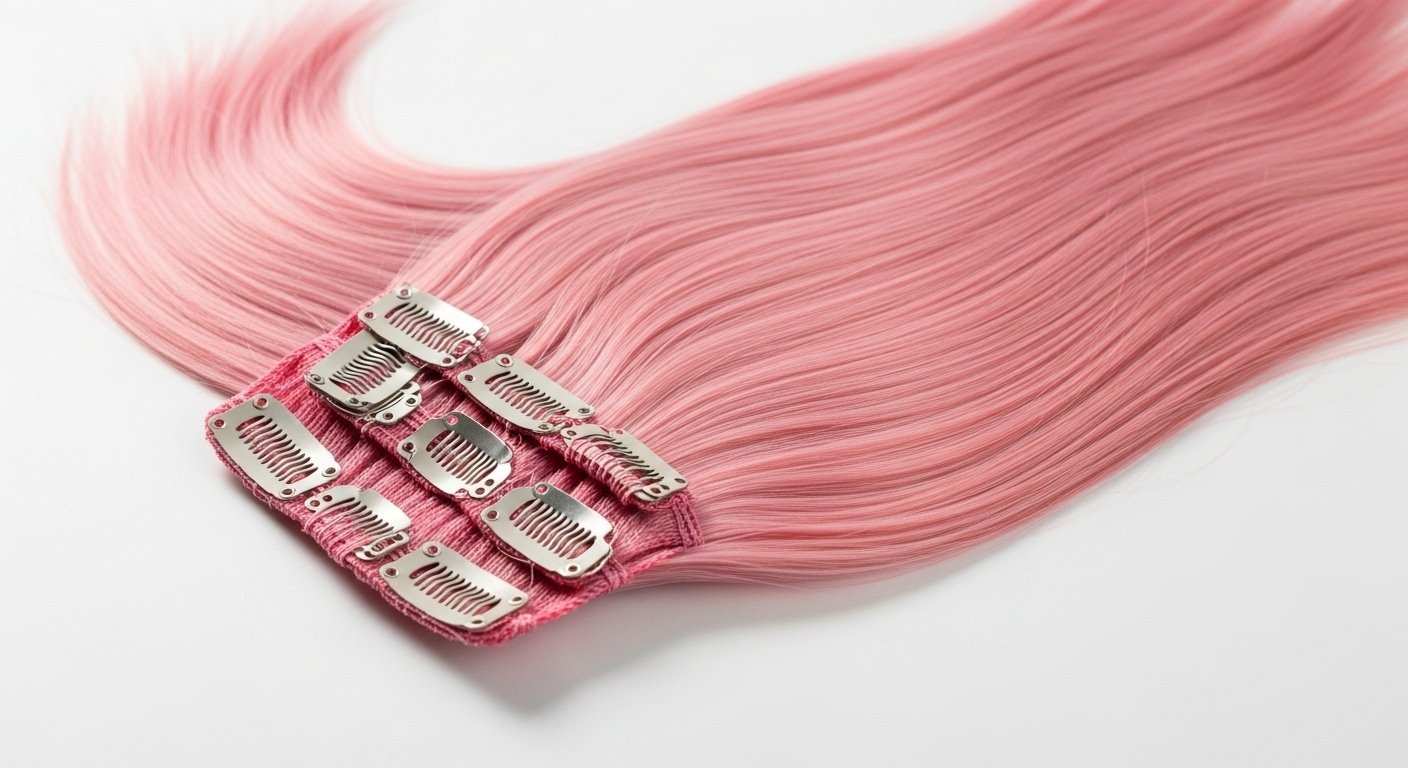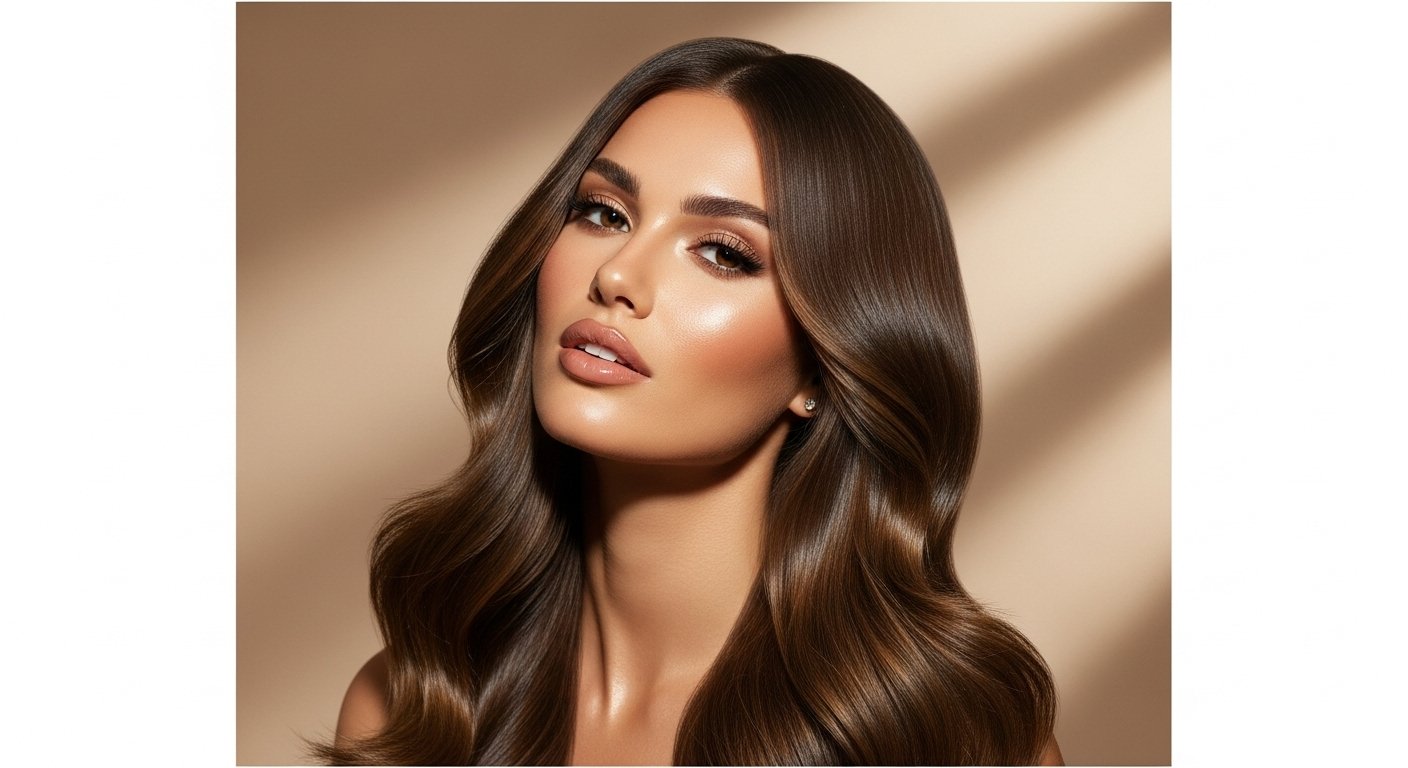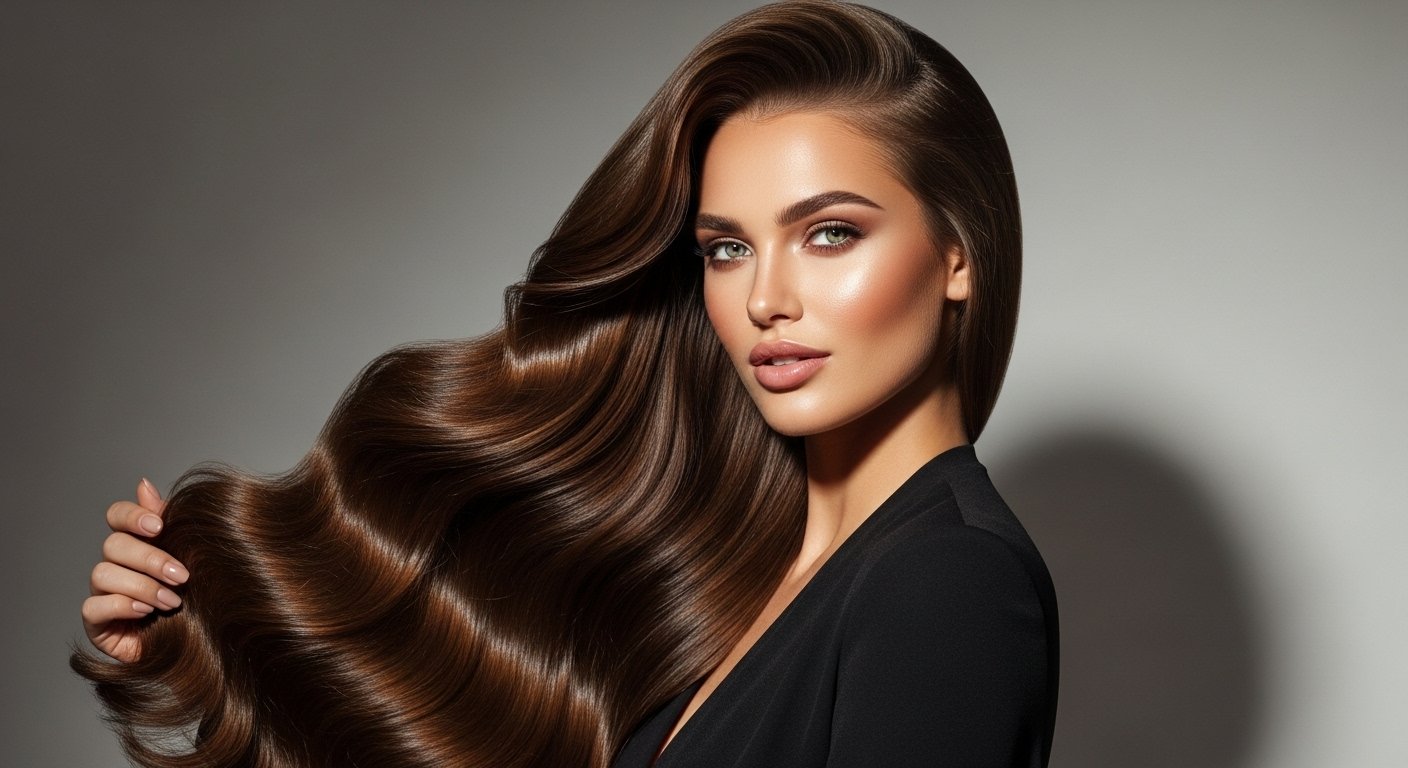Will Hair Tape-in Extensions Damage My Real Hair? Expert Advice
- Bilal Malik
- 04/16/2025
- Bilal Malik
- 10/29/2025
- Tehreem
- 10/02/2025
- Tehreem
- 10/02/2025
- Tehreem
- 10/02/2025
Tape-in hair extensions are a popular solution for those seeking longer, more voluminous hair. They offer a semi-permanent, longer-lasting enhancement compared to daily removable options like clip-ins. Many people find them appealing because they promise a natural look and the ability to add length, volume, or subtle color changes for several weeks. However, a common concern people have is, do extensions damage your hair? The answer depends on proper application, aftercare, and removal techniques.
The comparison with clip-in extensions highlights the potentially longer-lasting nature of tape-ins, setting the stage for discussions about their semi-permanent nature and factors to consider with this type of application. Let’s learn!
The Application Process: How They’re Attached
The “sandwich” technique is a method to place tape-in hair extensions. This process sandwiches a tiny portion of natural hair between two adhesive strips of extension wefts. Thoroughly wash and dry the hair, avoiding conditioner or styling products. Next, section the hair horizontally and isolate a thin, 1/8-inch strand.
A stylist inserts two extension wefts beneath the hair, leaving a tiny gap between the extension and the scalp. They repeat this process across the scalp to achieve a natural blend. Proper preparation and technique are essential for a safe and damage-free experience.
While the sandwich technique aims for a smooth blend, the adhesive bond and added weight of the extensions can introduce stress and tension to the natural hair, a factor to consider alongside the potential benefits.


Stress and Tension: Impact on Your Natural Hair
Hair extensions can damage the natural hair if improperly applied or handled. However, when properly applied and maintained, the risk is minimal. Improper handling, such as forcefully pulling on roots or attaching to insufficient natural hair, can cause “hair pull” and breakage.
Tape-in extensions are lightweight and can minimize tension, but improper application can cause “hair pull.” Proper aftercare and assessing hair density are crucial to prevent stress and tension on both natural hair and extension bonds. Many people ask, do extensions damage your hair, but the key lies in professional application and careful maintenance.
Beyond tension and stress, the adhesives used in tape-in extensions also play a role—so how safe are they? Let’s take a closer look.
Adhesives Under the Microscope: Safety and Potential Concerns
Tape-in hair extensions use medical-grade adhesive, similar to plaster. It’s strong enough to hold extensions for weeks but gentle enough for removal. The adhesive is removable, allowing extensions to be repositioned as the hair grows. Proper care is crucial, using extension-friendly hair care products.
Traditional hair products can break down the adhesive, leading to slippage and damage. Oils near the adhesive’s roots can dissolve the bond. Users should understand ingredients to avoid slipping extensions and providing clear aftercare instructions. This brings up the recurring question: do extensions damage your hair, which you can avoid with proper product choices?
With the right products and proper care, the risk of damage from adhesives can be minimized—but what do the experts say? Let’s look at professional insights on the pros and cons of tape-in extensions.
Expert Insights: Weighing the Pros and Cons
Professional hairstylists agree that proper installation, maintenance, and removal of tape-in extensions pose minimal risk to natural hair. They believe that damage is not inherent but depends on the installer’s skill and the wearer’s diligence in following aftercare guidelines.
Even though tape-ins are gentler, they still affect natural hair compared to having no extensions. This understanding is crucial for managing expectations and ensuring proper care. For those wondering, do extensions damage your hair? Experts emphasize the importance of professional handling.
To keep your hair and extensions looking their best, what happens after installation matters just as much as the application itself. Ready to learn how to maintain healthy, beautiful hair? Let’s dive into the essentials of aftercare.
Mastering Aftercare: Your Key to Healthy Hair
Proper aftercare is vital to maintaining the health of natural hair when using tape-in extensions. Use sulfate-free shampoos and conditioners, avoid applying near the roots, and brush lightly to avoid tangles. Do not apply oils or alcohol to the roots, and use heat carefully. To prevent friction, avoid tight hairstyles, use loose braids, and sleep on a silk pillowcase.
Wait 24 to 48 hours after application before washing to allow the adhesive to cure. Schedule regular reinstallation sessions every 6 to 8 weeks to avoid difficulties with natural hair growth. Following these instructions allows people to take actions to ensure they have a great experience with their extensions. Again, do extensions damage your hair? Not if you follow proper aftercare.
Now that you know how to care for tape-ins, how do they compare to other extensions? Let’s break it down.
Comparing Extensions: Tape-Ins Versus the Rest
Tape-in hair extensions are a good option compared to clip-in extensions, which are temporary and easy to attach and remove daily. They blend smoothly and are less damaging than fusion extensions, sew-in weaves, and micro-link or bead extensions.
Tape-ins are lightweight, evenly distributed weight across a wider weft, and are less time-consuming to apply and remove compared to other methods like fusion or intricate sew-ins.
They also aim to minimize potential impact because of their lightweight design and even distribution of weight across a wider weft. So, the question about “Are tape-ins damaging?” is clear now.
Extension Type | Application Method | Potential for Damage | Key Considerations |
Tape-In | Adhesive “sandwich” | Low to moderate (primarily because of application/removal) | Requires professional application and removal for best results; proper aftercare is crucial. |
Clip-In | Temporary clips | Very Low (least damaging as they are easily removable) | Can be bulky or uncomfortable for some; not for long-term wear. |
Fusion (Keratin Bond) | Heat-bonded to hair strands | Moderate to high (potential heat damage, stress on hair) | Requires professional application and removal; can be more difficult to maintain. |
Sew-In (Weave) | Braiding and sewing hair wefts | Moderate (tension on scalp from braids) | Requires professional application; can be heavy and difficult to clean. |
Micro-Link/Bead | Small beads to attach extensions | Moderate (potential for slippage and pulling) | Requires professional application and adjustments as hair grows. |
Busting Common Myths About Tape-In Extensions
There are several common misconceptions surrounding Are tape-ins bad for your hair? One of them is their potential to cause significant hair loss, but evidence suggests that when applied and cared for correctly, they are not inherently damaging. The key lies in professional application and gentle removal techniques.
Tape-ins are easily visible, but they offer a discreet and natural look because of their flat position against the scalp. Addressing these myths and providing factual information can help reduce anxieties and provide a more balanced understanding of tape-in extensions.
Debunking myths is one thing, but proper removal is key to avoiding damage. Here’s how to do it right.
The Crucial Removal Process: Protecting Your Locks
The removal process of tape in hair extensions is crucial to prevent damage to natural hair.
- It involves using an oil-based bond remover or a specialized adhesive remover, or alternatives like baby oil or coconut oil. The adhesive is broken down, and the extensions are gently peeled apart, avoiding forceful tugging.
- A tail comb can help, but avoid forceful pulling. You can re-tape and reuse the extension, but proper handling is essential to avoid damage. Without care, do extensions damage your hair? They can, but only with improper removal techniques.
Even with careful removal, certain factors can still increase the risk of damage. What are they, and how can you avoid them? Let’s move to the next section!


Factors That Can Increase the Risk of Damage
Tape-in hair extensions damage hair if improperly applied, used improperly, or removed without proper aftercare techniques. Neglecting proper products or brushing can weaken the adhesive and stress the natural hair.
Attempting to remove extensions without professional guidance or the correct products can also cause damage. Applying extensions to weak, damaged, or thinning hair can exacerbate issues.
Plus, leaving extensions in for longer can cause tangling, matting, and increased stress on the roots. Understanding and avoiding these risks can improve the chances of a positive experience.
Ultimately, the question, “Do hair extensions damage your real hair?” comes down to a matter of responsible application, consistent aftercare, and careful removal. With the right knowledge and a trusted professional, tape-in extensions can be your weapon for stunning hair transformations.
Love the idea of tape-in extensions? Get the facts, choose the right care routine, and enjoy stunning, voluminous hair without the risk of damage!





